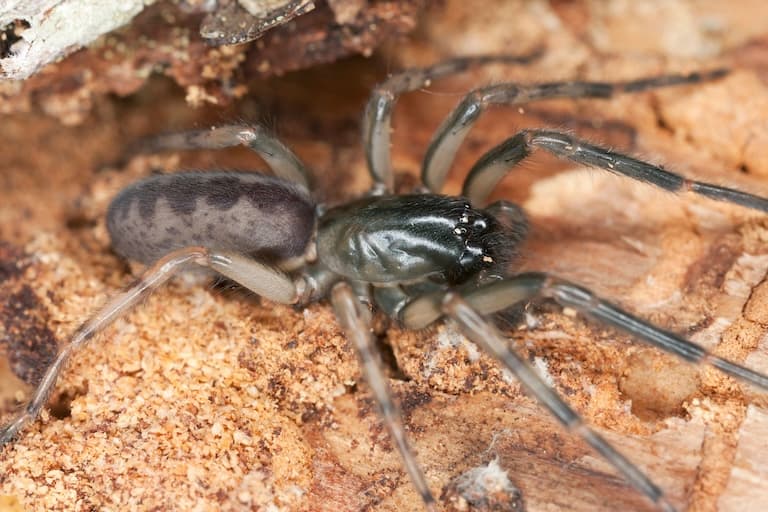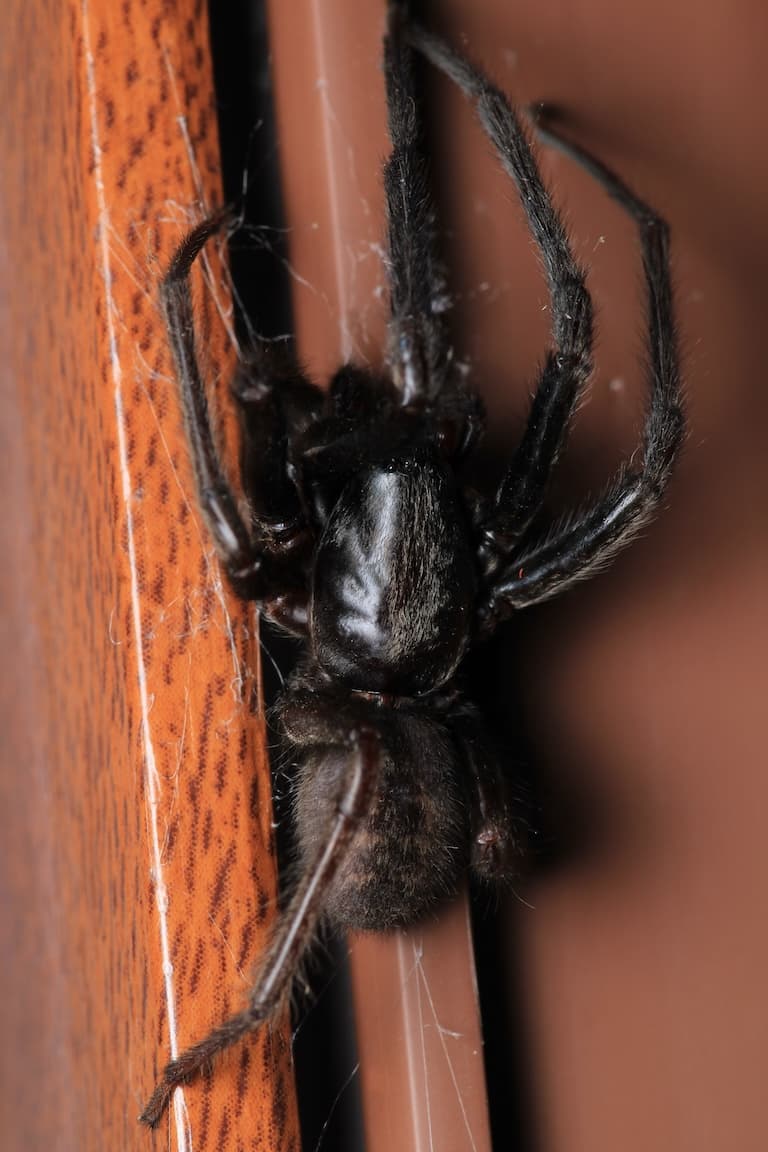Tube-Dwelling Spiders Profile
Spiders are everywhere. They’re probably in your hair, in your mouth, and under your bed right now. They sit in the corner of your room, judging you eight times and just waiting for you to fall asleep.
Well, most of them. The six-eyed spiders lack the principal pair of eyes—the most judgmental of the usual eight—leaving them ineligible for a driver’s license and relegated to dwelling in your tubes.

Tube-Dwelling Spiders Facts Overview
| Habitat: | Silken tubes inside plant or rock crevices |
| Location: | Worldwide, except in polar regions and deserts |
| Lifespan: | Not listed |
| Size: | Usually small, around 1.5 cm to 2.5 cm (0.6 in to 1 in) |
| Weight: | <1g |
| Colour: | Varied, usually black to orange-brown |
| Diet: | Invertebrates |
| Predators: | Birds, insects, mammals |
| Top Speed: | Mostly sedentary |
| No. of Species: | Around 170 across five genera |
| Conservation Status: | Most are not listed, at least one Critically Endangered (Ariadna ustulate, IUCN) |
Tube-dwelling spiders are but one family in a large range mostly unrelated of six-eyed spiders. They’re quite diverse and exceptionally widespread, found almost all over the world, and differ from other spiders in a number of ways.
They have a recognisable leg configuration, strange palps, and, being six-eyed spiders, weird eyes. But this doesn’t stop them from slaying, and some species can be very good-looking spiders.
Unfortunately, being spiders, most aren’t considered worthy of conservation rankings, but we do know that at least one island species is already critically endangered while others are still being discovered.
Interesting Tube-Dwelling Spiders Facts
1. Their legs are weird
There are currently five genera of tube-dwelling spiders recognized, most species fitting into the two most widespread and diverse genera, with three smaller ones dotted about.
They’re close relatives to the woodlouse-eating spiders, another visually-challenged family, widespread outside of the tropics.
Like the woodlouse-eaters, the tube-dwellers are known to be haplogyne, which is a very niche and outdated criterion of separation among the spiders and refers to the lack of hardened genitalia in the females.
This clade contains most of the spiders with six eyes and differs from the majority of spiders, which have the normal eight eyes and proud, hard genitalia.
But it’s not just their lady bits that are weird; tube dwellers have the kind of legs arachnophiles are interested in, too. Unlike most spiders, who sit with their first two pairs of legs forward, these spiders have their third pair up there as well.
This is thought to help in some way when living in a tube, which, as the name suggests, they do. These tubes are found in the ground, in tree bark, or between rocks, and are more complex than that of other tunnel-builders, often branching out as they descend into the crevices.

2. Their palps are weird
Pedipalps are amazing organs, especially if you’re an arachnid. They are diverse across the class of arthropods, but even for the individual, they work as a multi-purpose appendage.
They’re essentially truncated legs, used for everything but walking, and this includes cleaning, feeding, feeling around, and waving about when excited.
In most spiders, they look a lot like legs, but some, including the tube-dwellers, have attachments on theirs that can function as cutlery for slicing or passing over packets of sperm from the male to the female.
In males of at least some members of the Tube-Dwelling Spiders family, these manifest as an organ that looks a lot like the scorpion’s stinger. 1 2
3. Their eyes are weird
As mentioned, six-eyed spiders come from a multitude of evolutionary backgrounds, some rougher than others, and it’s important not to confuse tube-dwellers with the six-eyed spiders in the Sicariidae, which can be quite dangerous.
Still, like the Sicarids, tube-dwellers are lacking the principal pair of eyes—the pair that makes jumping spiders look so adorable and gives other spiders a depth of field and even the ability to look around without turning their heads.
This is a common feature of haplogynes, though not all of them share it (some have eight eyes, some have just two).
Most spiders only sense light levels and motion, and most are quite fine with that, including tube-dwellers, who spend their time hiding in tubes, just waiting for food to come to them. 3
4. Snake-back spider
The snake-back spider is an attractively marked spider that gets the English name from the row of dark-colored patches on the elongated abdomen said to resemble the markings on some poisonous snakes, such as the adder.
Bites from spiders in this family aren’t fully explored in the literature, but there appear to be none of concern. The largest species in Britain, Segestria Florentina, is another stunner of a spider, and its bite is said to be like a very painful injection that lasts some hours but isn’t dangerous. 4
 5. Some are critically endangered
5. Some are critically endangered
The vast majority of tube-dwelling spiders aren’t listed by the IUCN, and there are still species being discovered.
At least one species, Ariadna ustulate from the Seychelles, has not been spotted on some of its islands since the 1800s, and its total population is now considered to be fewer than 7,000.
The rest of its range is threatened by habitat destruction and invasive plants, and the species is now considered critically endangered.
6. They’re still being discovered
In 2018, two species were discovered in Australia, and in 2020, the first endemic arachnid to a Chilean island was identified as a species of tube-dwelling spider.
Spiders are still an underrepresented group of terrestrial arthropods, simply because many people find them creepy.
It’s likely there will be more tube-dwelling spiders found as conservation efforts, especially in areas like these remote islands, increase their attention on the small fauna that support the larger ecosystems.

Tube-Dwelling Spiders Fact-File Summary
Scientific Classification
| Kingdom: | Animalia |
| Phylum: | Arthropoda |
| Class: | Arachnida |
| Order: | Araneae |
| Family: | Segestriidae |
Fact Sources & References
- “Segestria pacifica”, Bug Guide.
- André Marsola Giroti (2011), “The spider genus Segestria Latreille, 1804 in South America (Araneae: Segestriidae)”, Research Gate.
- Jessica R. Marsh (2018), “New species of tube web spiders of the genus Ariadna from South Australia (Araneae, Segestriidae)”, Evolutionary Systematics.
- “Snake-back Spiders”, UK Safari.

 5. Some are critically endangered
5. Some are critically endangered